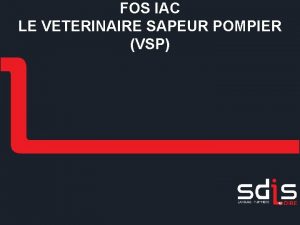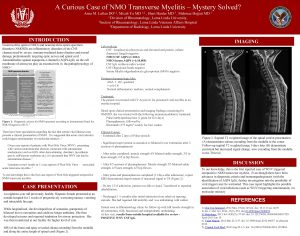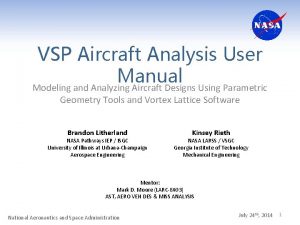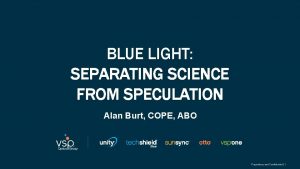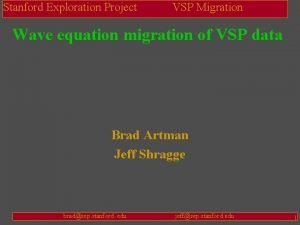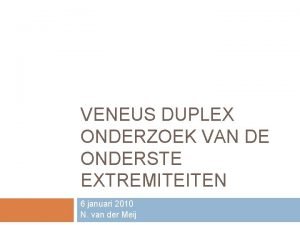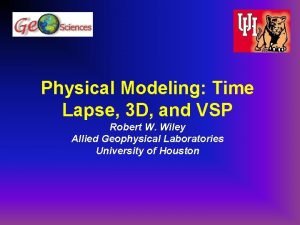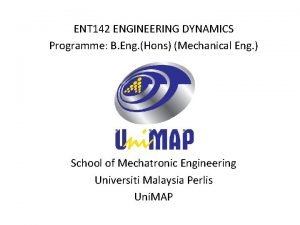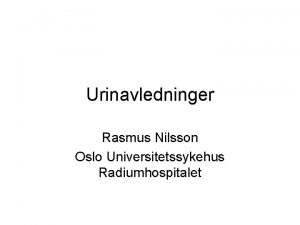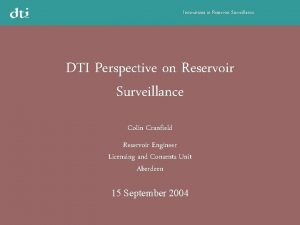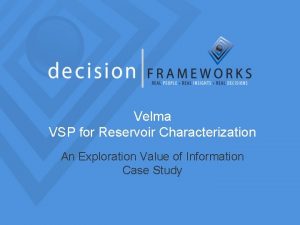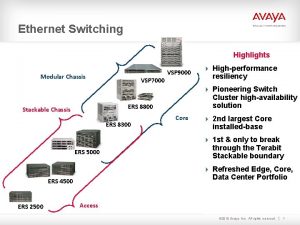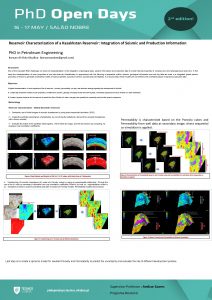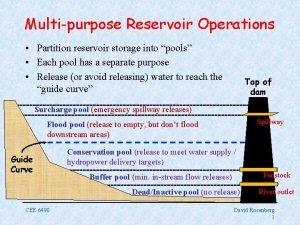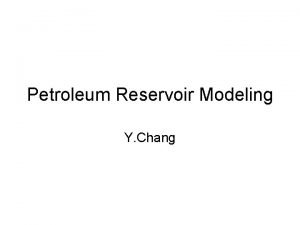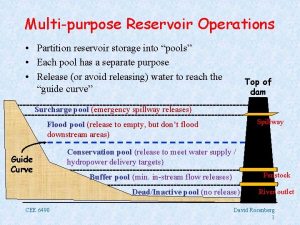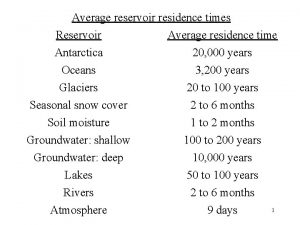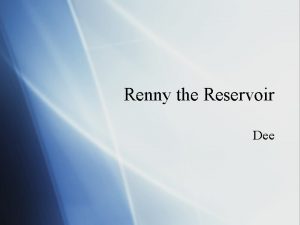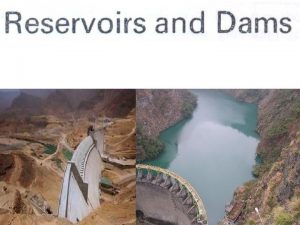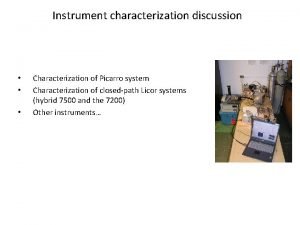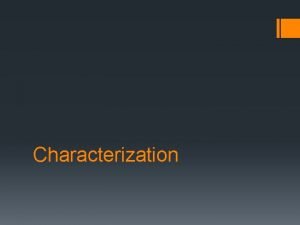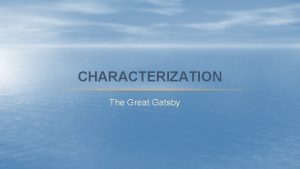Velma VSP for Reservoir Characterization An Exploration Value




















- Slides: 20

Velma VSP for Reservoir Characterization An Exploration Value of Information Case Study

Background 1 The Velma field is made up of a series of offshore channel sands, each of which is marginally economic. The team is currently evaluating ways way to develop the field. The current development plans call for the Green Channel to be drilled next, followed by the Red Channel (see the diagram on the next slide for more detail). The individual channels are developed using a horizontal well down the length of the channel. The cost of these horizontal wells is about 3. 5 M$. © 2007 Decision Frameworks Inc. All rights reserved. Do not copy. 2 The key uncertainty in the play is the existence of quality reservoir sand in the individual channels. The team currently estimates a 70. 0% chance of the Red Channel being sand, not shale. The team is planning on drilling a well in the Green Channel and is considering running a Walk-away Vertical Seismic Profile (VSP) survey to better discern the presence or absence of quality reservoir sand in the Red Channel.

Background 2 Proposed walkway VSP in the Green Channel to image the top of the “Red” Channel and confirm hydrocarbon presence, before drilling it. 2 nd Development Well Wa ay lkaw VSP Sea Level Sea Floor ntal zo Hori The 2 nd development well will drill horizontally into the “Green” channel. lop Deve Well l anne h C n Gree © 2007 Decision Frameworks Inc. All rights reserved. Do not copy. nel han ed C R 3

Background 1 The cost of running a VSP, including the rig time, is estimated at about 160 k$. However, the drillers have noted that running the VSP in the Green channel well increases the chance of losing the well bore. They have suggested drilling a slim-hole pilot well in the Red Channel, instead. The team has reviewed the reserves range expected in the Red Channel. They have agreed an initial “netback” of 3 $/Bbl to estimate the net present value (NPV) of each of the reserve outcome. (See the table below. ) The geophysicist has estimated the accuracy of the VSP survey and her ability to correctly interpretation to data, as follows: Should the team run the VSP? When sand is present, the VSP interpretation is reliable 95. 0% of the time; n When sand is absent, VSP interpretation is reliable only 80. 0% of the time. n © 2007 Decision Frameworks Inc. All rights reserved. Do not copy. 4 Reserves (MBbls) NPV (M$) P 10 10. 4 31. 2 P 50 7. 3 21. 9 P 90 3. 0 9. 0

Problem Frame Velma Case Study

Valuing Information Process © 2007 Decision Frameworks Inc. All rights reserved. Do not copy. 6

Problem Statement Should we run a walk-away VSP in the Green Channel well to better resolve the presence of Red Channel sand, prior to developing the Red Channel? Key question for the evaluation: n Is the benefit of the VSP worth the cost and risk associated with running it? © 2007 Decision Frameworks Inc. All rights reserved. Do not copy. 7

Problem Statement & Issues © 2007 Decision Frameworks Inc. All rights reserved. Do not copy. 8

Decision Focus (Decision Hierarchy) © 2007 Decision Frameworks Inc. All rights reserved. Do not copy. 9

Evaluation Options (Uncertainty Table) © 2007 Decision Frameworks Inc. All rights reserved. Do not copy. 10

Evaluation Focus Choose to evaluate getting information on: One uncertainty, from n One information source, to potentially change n One decision at a time. n © 2007 Decision Frameworks Inc. All rights reserved. Do not copy. 11

Evaluation Structure (Decision & Risk Timeline) © 2007 Decision Frameworks Inc. All rights reserved. Do not copy. 12

Problem Analysis Velma Case Study

Red Channel Value, with No More Information If we did not acquire the VSP survey: We would choose to drill the Red Channel, with an n Expected value of 13. 5 M$, and a n 30% chance of a -3. 5 M$ outcome. n © 2007 Decision Frameworks Inc. All rights reserved. Do not copy. 14

Red Channel Value, with 100% Reliable Information With perfectly reliable information, we avoid a 3. 5 M$ loss, 30% of the time. © 2007 Decision Frameworks Inc. All rights reserved. Do not copy. 15

Insights from 100% Reliable Information Analysis Where is the value coming from? The information is saving 3. 5 M$, 30. 0% of the time, by not drilling a dry hole in the Red channel when no sand therefore no reserves are present. n This is 100% reliable information, where the information is never wrong. The uncertainty is resolved before making the decision to drill. n 100% reliable information represents the maximum value that the information could be worth (1. 1 M$) and provides an upper boundary of worth; it’s as a good as it gets. n © 2007 Decision Frameworks Inc. All rights reserved. Do not copy. 16

Reliability of Interpretation – VSP © 2007 Decision Frameworks Inc. All rights reserved. Do not copy. 17

Red Channel Value, with VSP The VSP adds value because, when we interpret the absence of sand in the Red Channel, we choose not to drill it. © 2007 Decision Frameworks Inc. All rights reserved. Do not copy. 18

VOI vs. Chance of Sand in Red Channel Chance of sand presence in the Red Channel is currently about 70%. © 2007 Decision Frameworks Inc. All rights reserved. Do not copy. 19

Conclusions from the Value of Information Evaluation Value of VSP Information Why? VOI = 0. 11 M$ n Cost = 0. 16 M$ There is a high chance already (~70%) that sand is present in the Red Channel. n As the sensitivity to the chance of sand suggests that the VSP has the most value when the chance of sand in the Red Channel is about 15. 0%. n n The cost does not include the potential problems associated with running the VSP. The expected cost of the VSP would contain the risk weighted cost of running the VSP, given certain problems may occur. Although the VSP adds value, the cost is too high. © 2007 Decision Frameworks Inc. All rights reserved. Do not copy. 20
 Velma pijalović
Velma pijalović Reservoir characterization
Reservoir characterization Hyper-v-storage vsp event 9
Hyper-v-storage vsp event 9 Vsp pompier
Vsp pompier Rheumatologist vsp
Rheumatologist vsp Vspaero
Vspaero Tech shield blue
Tech shield blue Calhr 774
Calhr 774 Stanford vsp
Stanford vsp Collaterale oppervlakkige venen
Collaterale oppervlakkige venen Timelapse 3d vsp
Timelapse 3d vsp Vena cephalica
Vena cephalica Vmware vsp training
Vmware vsp training Ent vsp
Ent vsp Value creation value delivery value capture
Value creation value delivery value capture What is direct characterzation
What is direct characterzation Direct and indirect characterization practice
Direct and indirect characterization practice Muna bulk reservoir
Muna bulk reservoir Studerblære
Studerblære Exercise 38 review sheet art-labeling activity 2
Exercise 38 review sheet art-labeling activity 2 Reservoir surveillance definition
Reservoir surveillance definition



